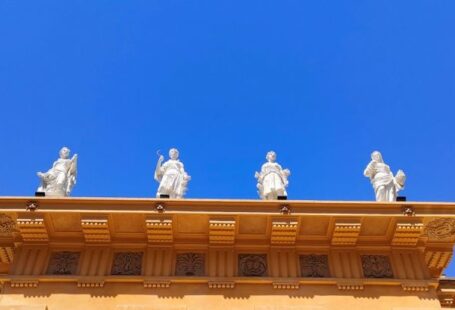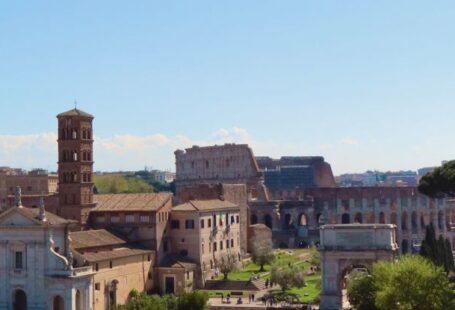The Roman Carnival, known in Italian as “Carnevale Romano,” has evolved over the centuries to become a must-see cultural phenomenon that attracts visitors from all around the world. This vibrant and lively celebration, deeply rooted in Roman history and tradition, showcases a colorful display of costumes, parades, music, and festivities that captivate audiences of all ages. The Roman Carnival, which takes place in the weeks leading up to Lent, offers a unique opportunity to witness the rich cultural heritage of Rome come to life in a whirlwind of excitement and merriment.
A Festive Fusion of History and Tradition
The roots of the Roman Carnival can be traced back to ancient Roman times when elaborate celebrations were held to honor the god Saturn during the festival of Saturnalia. Over the centuries, these pagan festivities evolved to incorporate Christian traditions, eventually leading to the creation of the modern-day Carnevale Romano. Today, the Roman Carnival serves as a vibrant fusion of history and tradition, blending elements of ancient Roman culture with the religious customs of the Catholic Church.
The Streets Come Alive with Color and Music
One of the most striking aspects of the Roman Carnival is the colorful and elaborate costumes worn by participants during the festivities. Masked revelers parade through the streets of Rome, showcasing a dazzling array of outfits inspired by historical figures, mythical creatures, and traditional characters. The vibrant colors, intricate designs, and ornate masks worn by participants create a feast for the eyes, turning the city into a living canvas of creativity and expression.
In addition to the stunning costumes, the Roman Carnival is also known for its lively music and entertainment. Street performers, musicians, and dancers fill the air with the sounds of traditional Italian music, creating a festive atmosphere that is both infectious and exhilarating. Visitors to the Roman Carnival can expect to be swept up in the energy and excitement of the celebrations, as they witness firsthand the passion and joy that characterize this annual event.
A Feast for the Senses
The Roman Carnival is not just a visual spectacle—it is also a feast for the senses. The tantalizing aromas of traditional Italian cuisine waft through the streets, tempting passersby with the delicious scent of freshly cooked pasta, pastries, and other culinary delights. Food stalls and vendors line the carnival route, offering a wide variety of Italian delicacies that are sure to satisfy even the most discerning palate.
In addition to the delectable food offerings, the Roman Carnival also features a plethora of street performers, artists, and vendors selling a diverse range of crafts and souvenirs. Visitors can browse through handmade jewelry, clothing, and accessories, or watch as skilled artisans create intricate works of art right before their eyes. The carnival atmosphere is a treasure trove of sights, sounds, and smells, offering something for everyone to enjoy.
Embracing Diversity and Inclusivity
One of the key reasons why the Roman Carnival has become a must-see cultural phenomenon is its commitment to diversity and inclusivity. The carnival welcomes participants from all walks of life, regardless of age, background, or nationality, creating a sense of unity and camaraderie among attendees. This spirit of inclusivity is reflected in the wide range of activities and events offered during the carnival, ensuring that there is something for everyone to enjoy.
From family-friendly parades and children’s workshops to late-night parties and masquerade balls, the Roman Carnival caters to a diverse audience, making it a truly inclusive and welcoming event. By embracing diversity and celebrating cultural differences, the Roman Carnival has become a symbol of unity and togetherness, drawing people from far and wide to experience the magic of this unique and unforgettable celebration.
In Conclusion: A Timeless Celebration of Culture and Tradition
The Roman Carnival has undoubtedly earned its reputation as a must-see cultural phenomenon, captivating audiences with its vibrant displays of history, tradition, and creativity. This annual celebration, steeped in centuries of Roman heritage, continues to enchant visitors with its colorful costumes, lively music, and festive atmosphere. By embracing diversity, inclusivity, and a spirit of unity, the Roman Carnival has transcended its origins to become a timeless celebration of culture and tradition that is cherished by locals and tourists alike. Whether you are a history enthusiast, a music lover, or simply looking for a unique and unforgettable experience, the Roman Carnival offers something for everyone to enjoy.





